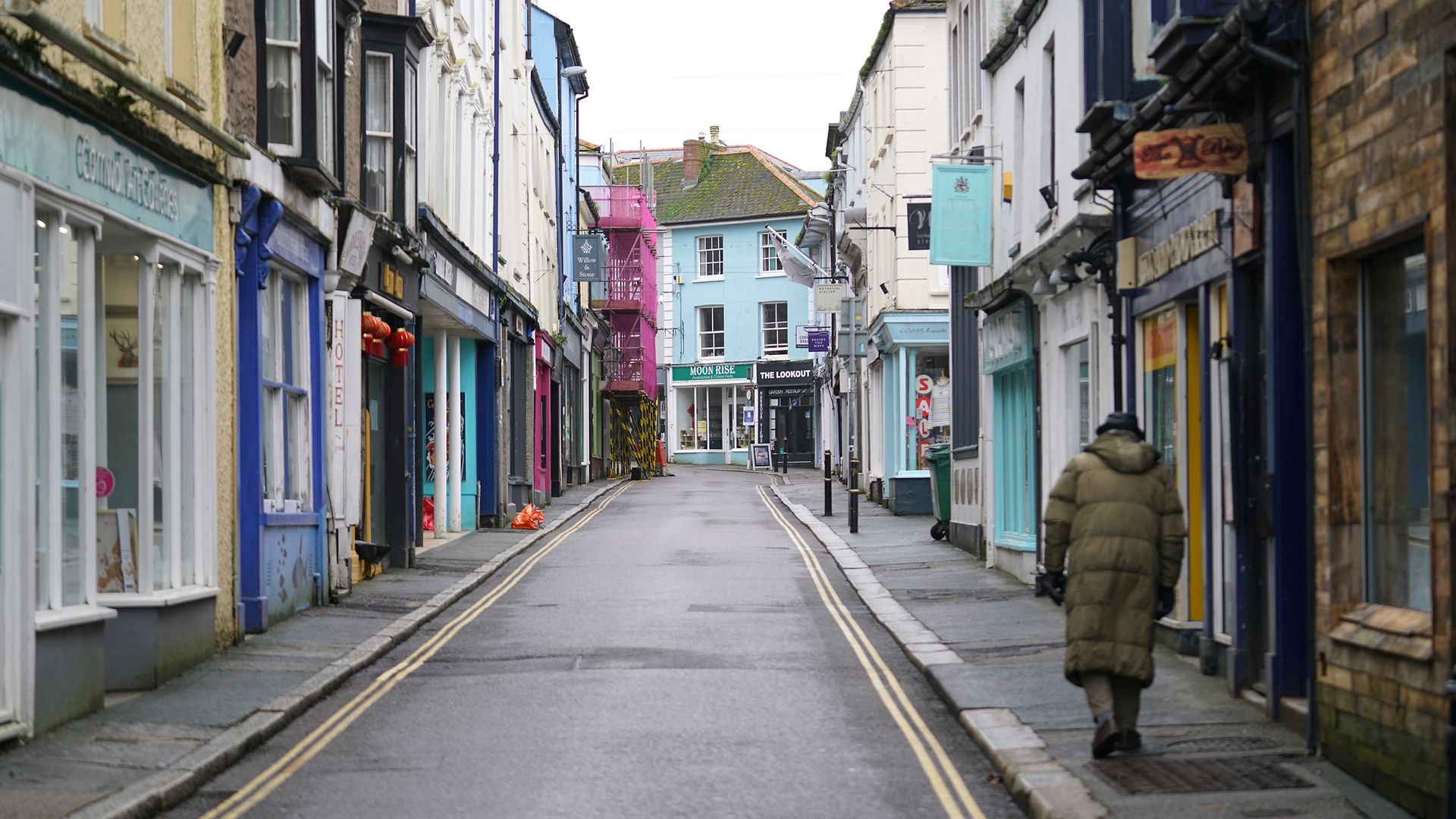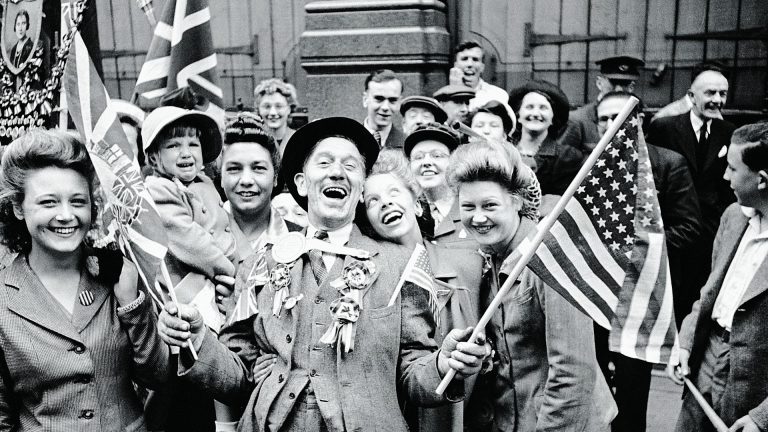
JAMES BALL on the long road ahead of the country – and the risks facing Boris Johnson’s government.
We are, by this point, all old hands at lockdown and reopening – we have at point seen it all before. Twice. So to be back at the phase when newspapers are starting to publish details of when different institutions might be opening up doesn’t feel as exciting as once it did.
Certainly some of the ominous signs remain the same. The UK has one of the top five worst death rates in the world from coronavirus, with 175 people out of every 100,000 having died so far, around half of them in this avoidable post-Christmas peak. We are still in the position where we are learning our futures not from an official announcement, slated for Monday February 22, but from leaks about what it will contain.
And yet there’s an unnerving feeling that we might actually, genuinely, be turning the corner. Hitting the landmark of giving a first vaccine shot to more than 15 million of the most vulnerable people was a fantastic moment. Officials and ministers alike sound optimistic about further progress in the next few months. But even the suggestions on reopening sound different than in previous lockdowns.
When we were set to leave the first lockdown last summer, there were efforts to do it with a big bang – not only would pubs reopen on a Saturday, it would be Saturday July 4. Restaurants wouldn’t just reopen, the government would cover half the cost of our meal to eat in them. People weren’t just allowed out of their homes, they were urged again and again to go back into the office.
Compared with that era, this reopening feels distinctly… slow. Schools are set to open on March 8, accompanied with little more than a very slight relaxation of rules around outdoor socialising: you’ll now be able to sit down with one other person, instead of just exercise with them!
And from that moment will flow a cautious timetable of dates set over the next couple of months – shops are due to follow in early April, with the possibility of outdoor-only opening for pubs and restaurants by then. Nothing indoors in the hospitality sector is seen as likely before late April or May.
The government has also made it clear any such reopening timetable given next Monday won’t be set in stone: the key figure will be the number of cases – not hospitalisations or deaths – and if they’re higher than they should be, the government says it will delay reopening.
To many of us, that timetable will feel painfully slow and cautious – but in reality it might well be a good cause for hope. Reopening too quickly on previous occasions let coronavirus take hold once again. The erratic schedule of openings and closings did more damage to many businesses than just staying closed would have done. Certainty, coupled with staying open once you can reopen, could be a better path.
Basing the decisions on cases, rather than severe illness or death, will also be a source of frustration to those who wish to see an early end to lockdown. But this is because we are entering a particularly risky few months for mutation, where vaccinated and unvaccinated people will mix as society reopens.
Viruses mutate all the time – and sometimes certain mutations will be more infectious or otherwise more successful. When no-one has been vaccinated, mutations that might render a vaccine less effective or even ineffective have no more chance of spreading and becoming dominant than any other – so there’s no especial risk of vaccine-resistant mutations.
When part of the population is vaccinated and part is not, that risk is higher – meaning that until we have a sizeable majority of the population vaccinated, we absolutely need to keep coronavirus cases low and maintain social distancing and similar measures. The alternative is needing to run a constant race of new vaccines versus new variants.
Both psychologically and medically, we will all benefit if we can make this lockdown our last – and there is a lot at stake if we screw it up. The government, though a year too late, seems to finally have grasped the key principles: it is better to open up slowly and stay open than rush and screw it up.
All we have to do to get back to something much closer to normal is to hold the line, stick to the plan, and we’ll get out. The danger is that as cases drop and we partly reopen, the clamour from corners of the media and backbench groups gets louder and louder and the temptation to rush gets stronger and stronger.
There’s an apparently inexplicable phenomenon well known in prisons – gate fever. As someone gets close to release, just as you’d have thought they’d be most likely to keep their head down and look forward to enjoying their freedom within days, they kick off and end up in more trouble and with more time on their sentence.
We are entering that same phase as a society: we can open up if we just stick to the path and count the days. This relies on us doing that as individuals and our government also holding its nerve and for once remembering that slow and steady can win the race.
They – and we – just need to keep putting one foot in front of the other. We can all manage that… right?
What do you think? Have your say on this and more by emailing letters@theneweuropean.co.uk
Coronavirus restrictions across Europe
Italy
The first European country to lock down, it is now under limited restrictions: schools, bars, shops and restaurants in most regions are open, but it has mandatory mask-wearing, curfews and has had controls on travel between regions. Italy’s cumulative death rate is above 150 people per 100,000.
Ireland
‘Level five’ – the country’s highest level of lockdown – is in place until at least March 5. There is a stay-at-home order and people must remain within 5km of home. Ireland’s cumulative death rate to date is around 80 people per 100,000.
France
France has a strict 6pm to 6am curfew and its borders are closed to non-EU countries (now with an exception for truckers) – but schools are open and shops can trade during the day. Bars, restaurants and recreational venues are closed, and the country has a cumulative death rate of 120 per 100,000
Belgium
Home to the capital of many of the EU’s institutions, Belgium has the bloc’s worst death rate, above 180 per 100,000. Its restrictions, though, are less severe than the UK’s: schools are open, as are shops, though home visits are banned (with some exemptions for social bubbles).
Spain
Like many European countries, Spain has compulsory mask-wearing indoors and outdoors. It has also announced stay-at-home measures until at least May, with exceptions for essential schooling, work, care responsibilities or to buy food. Its death rate is just under 140 per 100,000.
Slovenia
One of only two European countries with a higher cumulative death rate than the UK, but it has recently relaxed its restrictions. Groups of up to ten can meet indoors and outdoors, but bars and restaurants are closed. There is also a limited curfew.
Portugal
The country escaped the worst of the pandemic’s first wave, but following Christmas relaxation of travel restrictions had a major health emergency throughout January, which saw cumulative deaths soar to 140 per 100,000. As a result it imposed its first lockdown since May in mid-January.
Sweden
Having long resisted the lockdown measures of most European countries, Sweden imposed emergency laws and some restrictions last month. Bars and restaurants are still open, but with limits on people at the table and no alcohol sales past 8pm. Its death rate stands at around 120 per 100,000 – worse than the EU average and higher than its neighbours.










